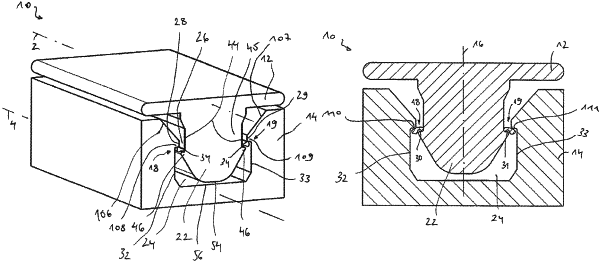| CPC F16B 5/0642 (2013.01) [F16B 5/0685 (2013.01); F16B 5/128 (2013.01)] | 21 Claims |

|
1. A connection assembly comprising:
a first component in a form of an elongated body, the first component extending along a first longitudinal extension axis; and
a second component in a form of an elongated body, the second component extending along a second longitudinal extension axis,
wherein the first and second components, starting from a separated disassembled state, are joinable to each other along a plane of relative movement parallel to respective planes of extension of the first and second components, into an interconnected assembled state, and back into the disassembled state,
wherein the first component has at least one latching element on either side of the plane of relative movement, and the second component has two latching element receptacles,
wherein, in the assembled state, each of the latching element receptacles cooperates with a respective latching portion of a respective one of the latching elements, each of the latching portions being movable along a movement path starting from a non-deformed rest state, the movement path having at least a component parallel to the plane of relative movement, a first portion of the movement path pointing in a disassembly direction with respect to the rest state, and a second portion of the movement path pointing in an assembly direction opposite the disassembly direction with respect to the rest state, and the first portion of the movement path being limited by stop surfaces against which the respective latching elements rest in a course of disassembling the first and second components.
|